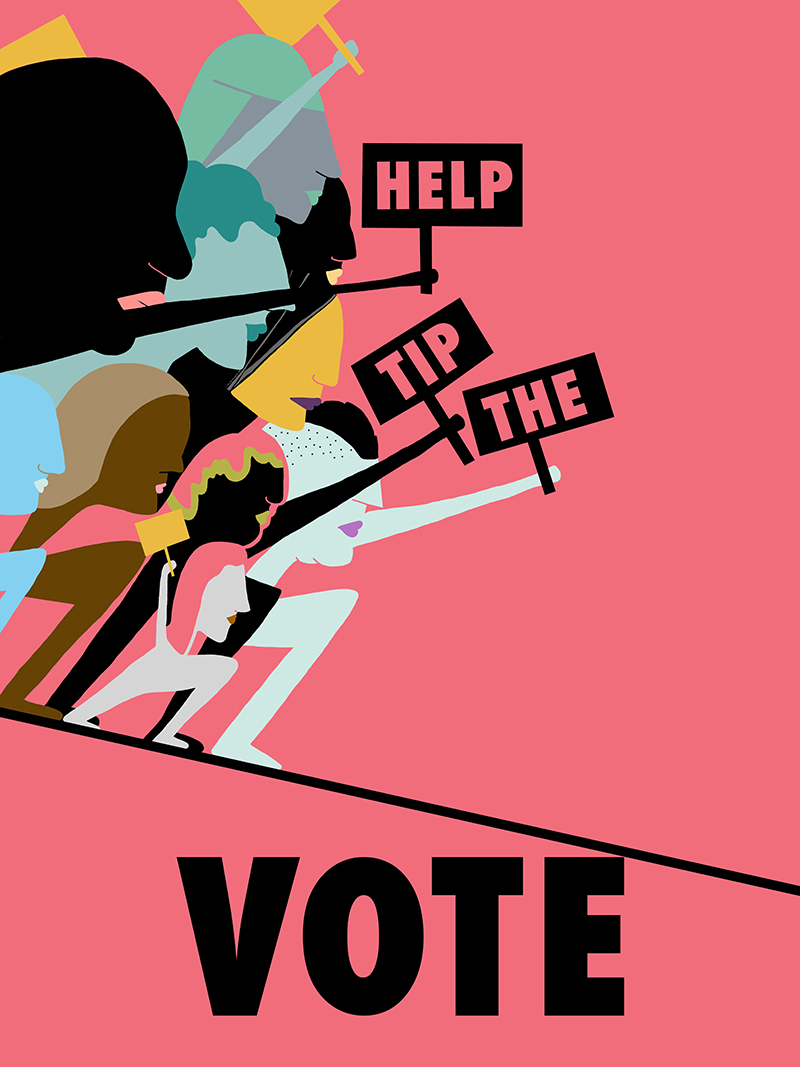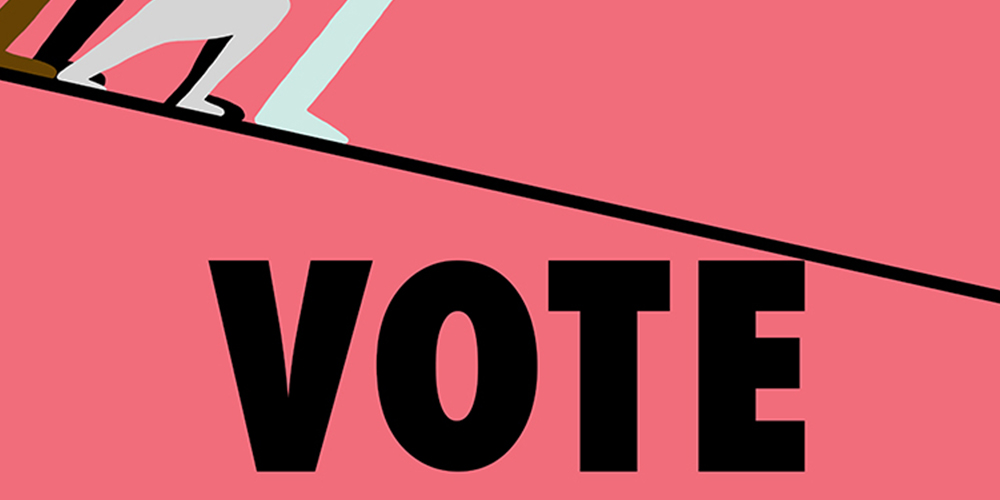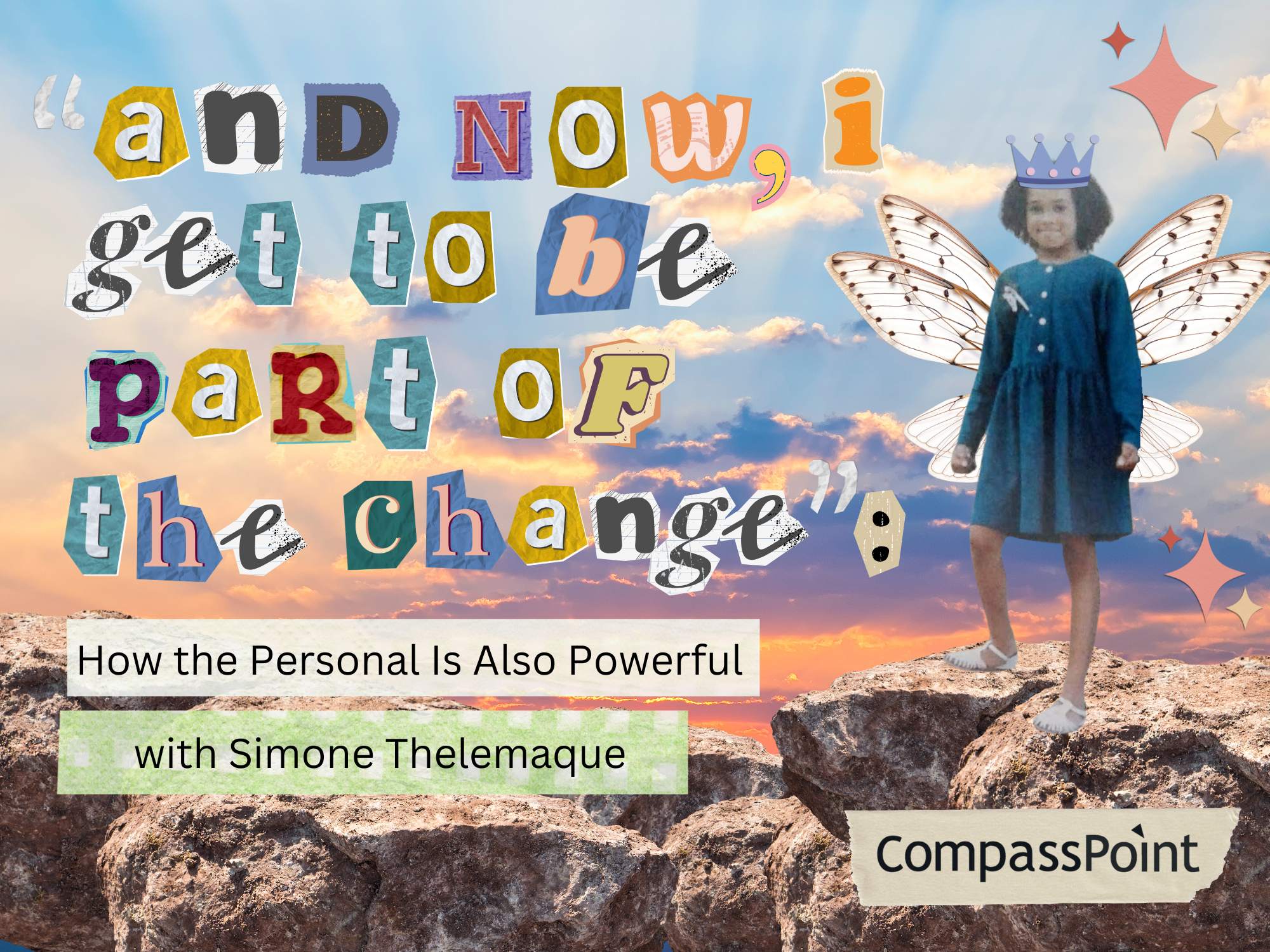It's a common misconception that nonprofits can't engage with electoral politics. With just a few weeks left until Election Day we're sharing some resources to get you ready to vote and mobilize your community to do the same!
by Maro Guevara
This election will be massively consequential for so many of the issues we care about and fight for. Early voting has already started in some states, and our collective advocacy as nonprofits and community-based organizations has never been more important. A recent report from Nonprofit Vote showed that nonprofit engagement can make a marked difference in voter turnout.
Our votes alone can’t dismantle the interlocking systems of oppression and extraction that lead to racial injustice, environmental crises, and economic inequality. But elections can help reshape the terrain that social change organizations and leaders do their work in. Looking ahead to 2021 and beyond, how can we seize this moment to shape the conditions we’re working in?
Nonprofits and social change leaders—how will we use our voices to turn the tide toward justice and equity in this upcoming election? How can we be strategic and realistic about what voting can accomplish, and encourage other folks to do the same?
One Tool Out of Many
We know we need deeper transformation than what the choices before us represent and that the long arc toward justice extends far beyond a single election. Voting is one tool that can minimize harm to our communities, but it’s important not to frame electoral politics as a cure-all or even the best way to bring about change. We know that not showing up to vote can mean yielding power to groups and leaders who are directly at odds with what we stand for, but we also have to be real about the fact that politicians, more often than not, work to preserve the power of the State. They aren't going to deliver liberation; only people power and social movements can do that.
Given this framing, how can we be pragmatic and strategic and use this upcoming election to move us closer to our collective goals for liberation?
What Can Nonprofits Do?
Broadly speaking, nonprofits are prohibited from 'electioneering' activities and are required to be nonpartisan, but they can be bold advocates for policies and causes. We can encourage others to vote and support policies that advance our missions. When it comes to questions such as whether you should criticize an incumbent (someone currently holding office) this close to an election, what’s permissible becomes a little more nuanced. For 501c3 organizations, the key is staying away from actions that can be deemed “political intervention in a campaign.” This guide from Bolder Advocacy shares information on specific scenarios: The Rules of the Game: A Guide to Election-Related Activities for 501(c)(3) Organizations
Nonprofits can also encourage folks to get counted as soon as possible in the national census! The census helps determine how many representatives each state will have in Congress and how much federal funding communities receive. With reports of only 66% of households self-responding, and counting efforts set to end at the end of this month, a final reminder from a trusted nonprofit to respond to the census could make a huge difference.
We can also use our platforms to shed light on policies and practices that undermine the integrity of voting and that intentionally suppress the vote in our communities. Voter suppression is rampant and intentionally targets Black, brown, Indigenous, and AAPI communities. We can support groups that are organizing BIPOC votes and engaging disenfranchised communities (see some suggestions at the end of this blog).
Remember: Movements are made up of a wide range of folks with radically different views on electoral politics. Accusing non-voters of being selfish doesn’t get us anywhere. We need to lean into empathy and listening, respect each other’s political journeys, and realize that folks are engaging in movement work in lots of different ways.
Shed Light Where Others Aren’t
The presidential election isn't the only meaningful item on the ballot. Many of the votes that have the greatest and most direct impacts on our communities happen at the local level, so they deserve just as much (if not more) attention. Your organization’s advocacy around local ballot measures might energize folks to re-engage with the issues that matter most to them. That could be the difference between someone showing up or staying home.
With so much on the line, how will you make the most of your power and platform to mobilize the vote? Here are some resources to get yourself ready to vote, think about how your organization can mobilize others, and some suggestions of organizations you can support.
2020 Election Resources
1. Get yourself ready to vote.
- Double-check your registration.
Don’t take anything for granted and always double-check your voter registration: Confirm You're Registered to Vote.
- Make sure you know key dates.
- For California:
- The deadline to register online to vote is Monday, October 19, 2020.
- The deadline to register to vote by mail (postmarked by) is Monday, October 19, 2020.
- For important national deadlines:
- For California:
3. Make a plan to vote.
- If you’re voting by mail and live in a state that hasn’t instituted universal Vote by Mail, request a ballot ASAP. Some states, like California, have instituted universal Vote by Mail, meaning everyone should receive a ballot ahead of the election.
- You can find instructions for voting by mail in California here: Vote by Mail. If you’re voting by mail, don’t forget: your ballot won’t be counted unless you sign it and your signature matches the signature on file.
- If you’re worried about the USPS being undermined, underfunded, or unable to keep up with the huge volume of ballots that are sure to be mailed this year due to COVID, remember that you can drop off your ballot at a polling location. Find out where using a Polling Place Locator.
- If you can, consider volunteering to be a poll worker (and help give older poll workers who are at greater risk from COVID complications a break):
- California: Poll Worker Information
- National: Become a Poll Worker
- After you vote, check your ballot status!
4. Start a conversation (today!) about what your organization can do and commit to at least one action item.
- Encourage others to register and vote! Send reminders through your newsletter and social media channels. Organize a Zoom call with members of your community where folks can share resources and make a plan to vote. Share resources like these voting tools from Common Cause: Voting Tools
- Make sure your team knows about government-sanctioned time off for employees to vote: "Time off to Vote" Notices
- Advocate for the causes you care about. Nonprofits are prohibited from intervening in political campaigns, but they can be bold advocates for policies and causes: 501(c)(3) Public Charities and Ballot Measures. Check out some other tools for advocacy here: Bolder Advocacy: Homepage.
- Remind your team, your community, and others of important dates:
- California: Election Dates and Resources
- National: US Vote Foundation | Election Dates and Deadlines
5. Support organizations building power through the election cycle and beyond.
Support folks who are organizing in BIPOC communities to activate the vote, build civic engagement, and champion policies that promote equity and justice. Here are just a few suggestions with a focus on California. If you’re sharing information through organizational channels, be careful when amplifying messages from 501c4 or 501c6 organizations that may be involved in electioneering activities.
- Power California
- California Native Vote Project
- Native American Voting Rights Coalition
- Yo Voy A Votar ¿Y Tú? (Voter initiative from Latino Community Foundation)
- Black to the Ballot (A project of Black Futures Lab)
- Asian Americans Advancing Justice | AAJC
- APIAVote: Get Involved
- American Association of People with Disabilities Voter Resource Center
How are you and your team working to bring people power to the polls? Share your stories in the comments below.

Image by Lisa Giraldi, from Amplifier.Org






Submit a comment